Top 5 Interesting Facts about Cyrus McCormick
A US industrialist named Cyrus McCormick created the mechanical reaper. He is revered as the founding figure of modern agriculture. He founded the McCormick ... read more...harvesting firm after the success of his reaper. Both a farmer and an inventor, Robert McCormick Junior was his father. He picked up his father's talents and developed an interest in mechanicals. This excellent innovator is well known to those who are not historians. Below are some interesting facts about Cyrus McCormick for our readers.
-
On February 15, 1809, McCormick was born at "Walnut Grove," a 1,200-acre family farm in rural Virginia. He was the son of Mary Ann Hall and Robert McCormick, a farmer, developer of agricultural equipment, and whiskey distiller. Robert McCormick created hydraulic machinery and reapers, but he never had any economic success with any of his creations.
Cyrus McCormick had very little formal schooling since he wasn't interested, which is an interesting fact about Cyrus McCormick. Instead, he used to spend time in his father's workshop, where he became interested in mechanics and creating new machines and equipment. For this reason, Cyrus McCormick took up the challenge and created a final, functional version of the wheat reaper after his father was unable to do so.
Young McCormick developed a political interest. He was a devoted supporter of slavery and a Democrat. He came to the North in the late 1840s and eventually bought the Chicago Times because he saw Abraham Lincoln's election as a calamity. He would express his pro-Southern viewpoints through the paper.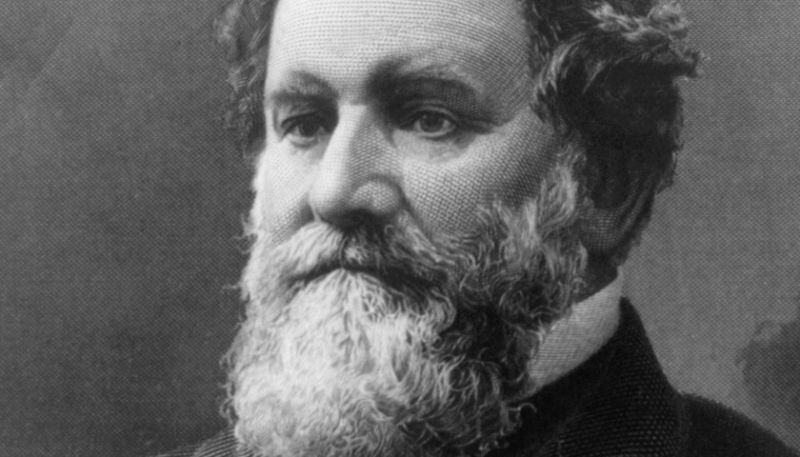
Photo: Tennessee Star Video: Studies Weekly -
The mechanical reaper, created by Cyrus Hall McCormick, combined all the tasks that prior harvesting machines had carried out independently. With the help of his time-saving technology, farmers were able to more than quadruple their crop size, which led to advancements in farm equipment.
Once his father saw the wheat mechanical reaper had a lot of promise, he filed a patent for it. Unfortunately, despite spending 28 years perfecting the reaper, Robert McCormick was unable to release a functional version of it after filing for a patent. From this point on, Cyrus McCormick took over the remaining work and, with the aid of an African slave named Jo Anderson, constructed a reaper that was entirely functioning.
After Obed Hussey declared in 1833 that he was building his own reaper, McCormick patents his design in 1834 and begins producing the machine on the family farm in 1837. Six years later, he started to provide licenses for its production in other regions of the nation. He established a factory in Chicago in 1874, starting what would later grow to be one of the biggest industrial complexes in the United States.
He submitted more patent applications quickly after the innovation and helped with promotion and sales. In Virginia in 1831, he gave the reaper its first public demonstration. Nobody anticipated the business would expand despite competition and legal patent concerns, but this was a tremendous accomplishment in the realm of agriculture.
In 1837, Cyrus's family's iron factory went bankrupt, leaving them with a mountain of debt to settle. After the reaper's initial demonstration was a success, Cyrus McCormick established a production facility, worked on enhancements, and started conducting commercial sales. His new company began to slowly gain traction once he sold his first mechanical reaper in the market in 1840.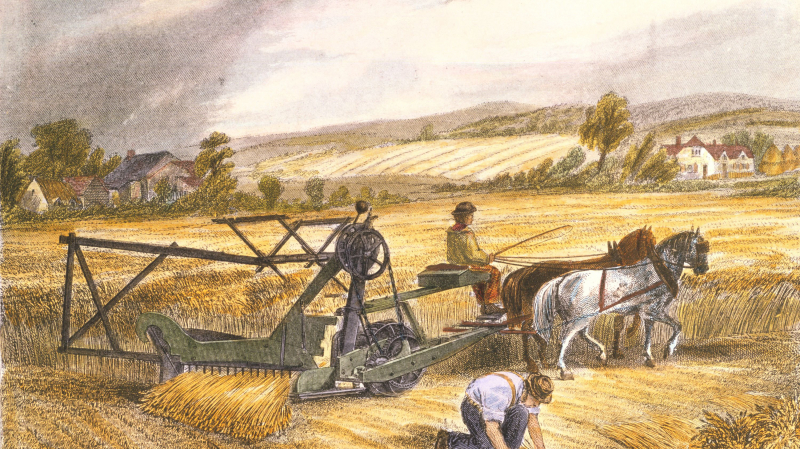
Photo: ThoughtCo Video: Amity GoldTeam -
McCormick, a devout young man who believed his duty was to help feed the world, would become wealthy and well-known thanks to his innovation. Early 19th-century farmers needed a lot of help to harvest their crops. He made it his goal to minimize the number of workers required for the harvest. In creating the reaper, he drew inspiration from many other people, including his father and Jo Anderson, a man his father had held in servitude, but he ultimately developed the reaper according to ideas that were completely different from those followed by Robert McCormick.
Soon after, McCormick gained notoriety among farmers for his invention; he was more concerned with assisting people than with advancing himself. It was because he was a devout person who thought it was his duty to provide for and assist others, an interesting fact about Cyrus McCormick.
To harvest crops, farmers used to hire a lot of workers in the early 19th century. For harrowing and plowing, animals were used. Cyrus McCormick's creation was nothing short of a miracle because it eliminated the need for as many workers because everything was to be done mechanically.
He continued to be active in a number of charitable endeavors in addition to being an inventor and manufacturer. He continued to be involved in both the Presbyterian Church and the Democratic Party. Additionally, he played a key role in the development of Chicago's McCormick Theological Seminary in the United States.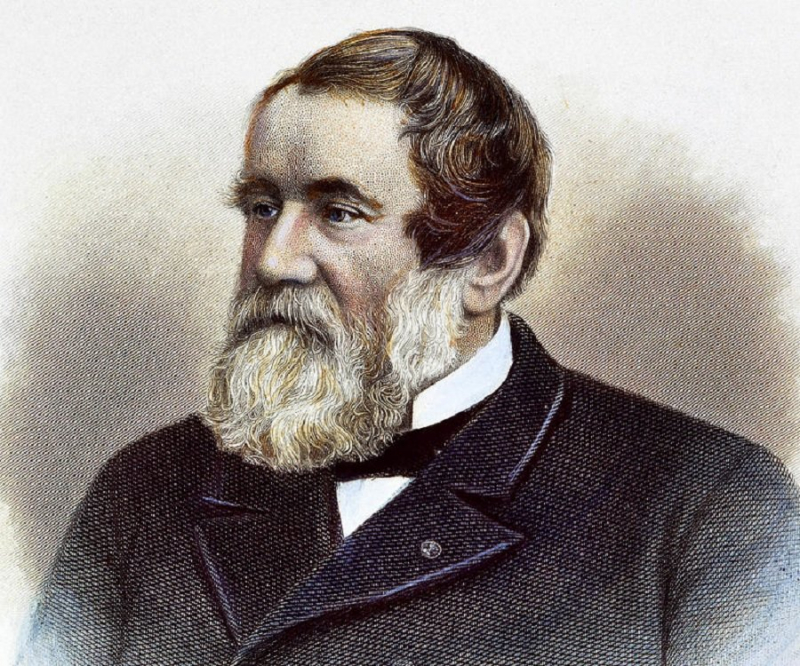
Photo: The Famous People Video: The Story of Liberty -
Early in the 1840s, McCormick made the decision to broaden his customer base to the Midwest. He granted numerous business owners, including one in Cincinnati, Ohio, permission to produce his reaper by franchising his company. McCormick sold fifty reapers annually by 1844. Obed Hussey's reaper was not even close to McCormick's harvester in terms of quality, and McCormick swiftly outsold Hussey.
McCormick relocated his headquarters from Virginia to Chicago, Illinois, in 1846, building a facility that would start manufacturing his reapers in large quantities in 1848. The location of McCormick's facility in Chicago was optimal. The majority of immigrants who went to the frontier in the American West intended to buy property so they could start farming. In order to reduce the strain on their fields, McCormick believed that the migrants would want to buy his reaper. McCormick's presumption was accurate. By 1856, McCormick's business was employing 200 employees and producing 4,000 reapers annually. Additionally, McCormick started marketing his reaper across Europe.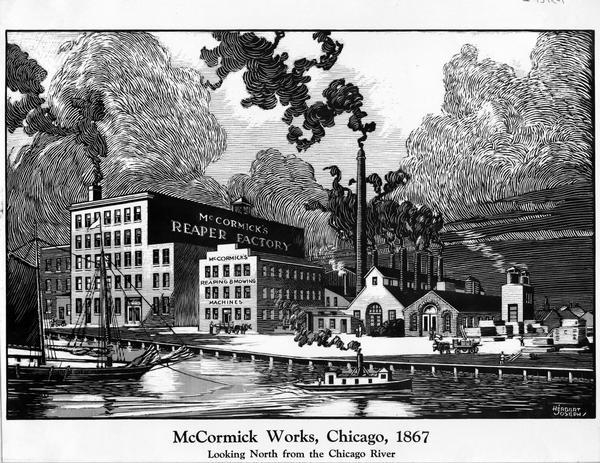
Photo: Wisconsin Historical Society 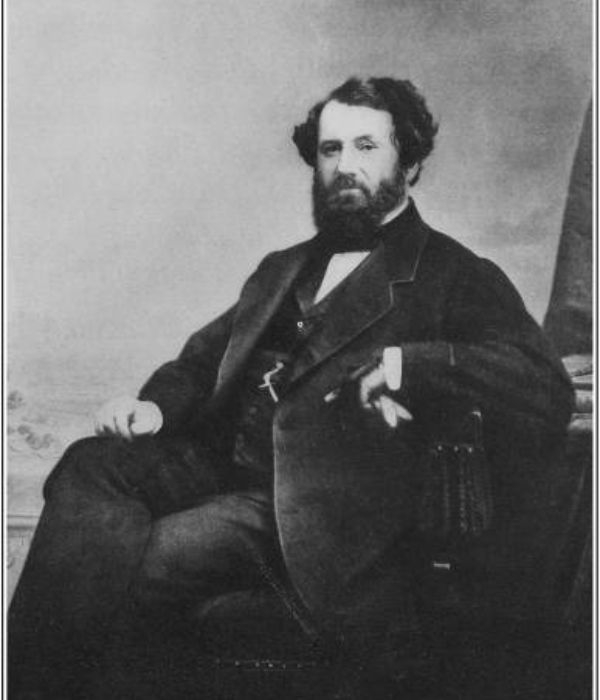
Photo: Project Gutenberg -
Farmers were wary of change and uneasy about a device that was later described as "a cross between a wheelbarrow, a chariot, and a flying machine." Unfazed, McCormick spent ten years perfecting his invention, obtaining his first patent in the process (1834). He also used innovative commercial strategies, such as flexible credit requirements for purchases, written performance promises ("15 acres a day"), easily accessible spare parts, and public relations campaigns that informed rural areas about the advantages of technology.
The mechanical reaper finally became popular starting in 1841, to the point where McCormick was later compelled to shift production out of the blacksmith shop on his family farm and into a factory in Chicago (1847). Because of McCormick's invention, the Midwest's grasslands could now serve as the country's "breadbasket."
Because of his invention, he rose to fame and recognition. He proceeded to England, where he was awarded a Gold Medal in London's renowned Crystal Palace. Regrettably, a fire in 1871 completely destroyed Cyrus's business. Despite sustaining such a significant loss, the family restored the business, and it kept expanding and prospering. He continued to pursue research and innovation. Cyrus McCormick created a new reaper design in 1872 that was used to tie the bundles together with twine.
An interesting fact about Cyrus McCormick is that he was inducted into the Junior Achievement US Business Hall of Fame in 1975 as a result of his noteworthy work for farmers.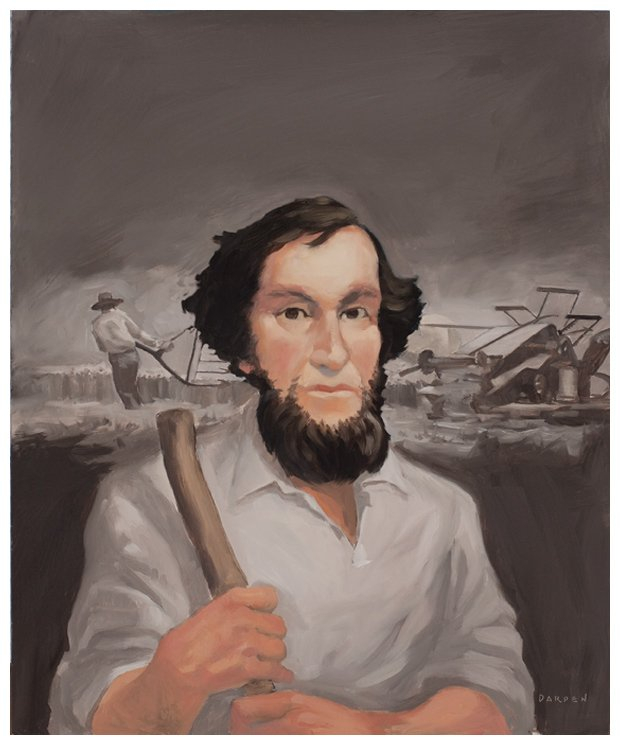
Photo: Virginia Living Video: iBiz


























